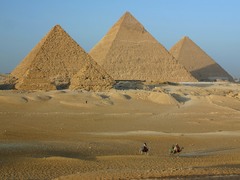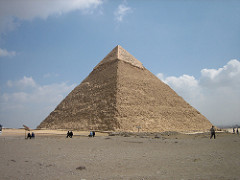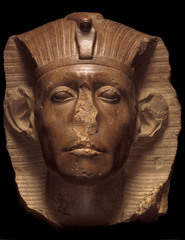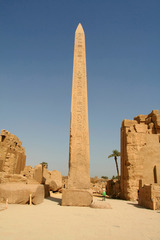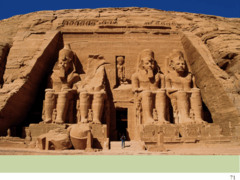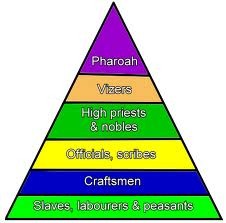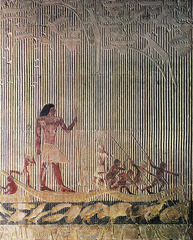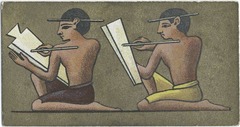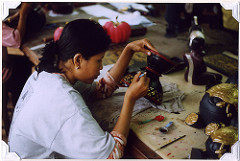Old Kingdom
- Famous for building pyramids (The Great Pyramid.) 2700-2200 BCE
Middle Kingdom
-Famous for its achievements in art and literachere and archatecture (white chapel.) 2000-1800 BCE Period of Reunification
New Kingdom
-Famous for its large monuments and increased trade. (Temple of Abu Simbel.) 1600-1100 BCE
The Great Pyramid of Giza
- Took more than 20 yrs to build
-Used more than 2 million stone blocks
-They may have created ramps to help get loads of bricks up the pyramid.
-More than 40 stories tall
Old Kingdom
Khufu
-He ruled from 2551-2528 B.C.E.
-Biggest acomplishment was creating The Great Pyramid.
-Some people described him as a harsh and cruel leader while others said he was kind
Old Kingdom (1st pharaoh)
Senusret The First
He ruled from 1971-1926 BCE.
He was a strong leader and during his reign art and liturature flourished.
His greatest acomplishment was creating the white chapel
Middle Kingdom (2nd pharaoh)
White Chapel
- Made out of Alabaster (hard white stone.) Possibly had a thin layer of gold.
-It had scenes carved into it including egyptian symbols, pharros pictured with the gods and animals (birds.)
-Arcaeologists later found the temple in pieces but were able to reconstruct it because it was in such good shape. (a later pharaoh used it in his own monument)
Middle Kingdom
Hatshepsut
She was the first women pharro.
She ruled from 1473-1458 BCE
She premoted trade w/ other countries
Her biggest trade was to the African Kingdom of Punt
She had a temple called Dayr al-Bahri
New Kingdom (3rd pharaoh)
Dayr al-Bahri
The main part of the temple was built into the side of a cliff overlooking the nile
The entrance had 200 spinx and there were 2 thin monuments called Obelisks
Inside the temple, the walls were covered in carvings representing the the voyage and goods brought back from Punt
Ramses The Second
Ruled from 1290-1224
He was one of the most well preserved mummies ever found, and was a military leader and master builder.
Ramses reached a standoff with the Hitties even though he was so badly outnumbered.
He was called Ramses the great because he ruled 60 years longer than all other pharros
Peace maker
New Kingdom (4th pharaoh)
Abu Simbel
Twice a year the sun was positioned to be able to shine through this temple, flooding the halls with light and lighting up the statues.
It honored his favorite wife named Nefertari
The temple was once saved from flooding. They cutted up the temple and relocated it 250 ft higher.
The statues at the entrance are Ramses
social structure of Egypt
Most people had little chance of moving to a higher class so it was very rigid.
Government Officials
Visier- more power than anyone else except pharos
Chief Treasurer- oversaw kingdoms wealth
General of armies- help organize people during times of war and national security
The choices they made affected how much the lower class earned, and without them Egypt would be very disorganized
Priests
High Priest- advised the pharaoh and oversaw all religious cerimonies
Temple priests- Took care of the temple and the temples god.
Other Priests- Did more common priests jobs.
Priests oversaw embalming
They had a lot of power because the lower classes and even the pharaoh relied on them for guidance. People relied on them to help guide their descions on a religious stand point.
Affects Peoples choices
Scribes (men only)
Schools for scribes were run by priests. You started school at five and stayed in school for 12 years. Classes sometimes lasted from sun rise to sunset. They were even beaten if they were not paying attention
They recorded amounts of grain and food supply's, collected taxes, court cases, and how many people lived in egypt.
They collected important information for everyone to know. Including their taxes and food supplies. Without them people wouldn't know needed information like how much food they have or how much tax they need to pay.
Artisans
Stone carvers- most skilled out of the Artisans, they helped put artwork in tombs to honor the dead and they made statues like relifs and engravings.
Painters- created scenes of the daily life in Egypt
Potters- created cerematics like bowls and pots
They made many things that people would use in their daily lives or things that they would see on a daily bases. Without the potters, no bowl. Without painters, no paintings. Without carpinders, no houses. Without stone carvers, no statues.
They are not valued but important.
Peasants
- Their lives revolved around the nile river and its seasons: flooding season, planting season, harvest season.
Farmers plowed then planted seeds and later in the year harvests their crops.
While not busy they would help construct monuments like the pyramids.
After their hard work during the harvest season they were allowed to keep as much leftover grain there was as food.
They were extremly important because they helped build monuments and provided all of the crops and food for egypt, they would starve without peasents.
